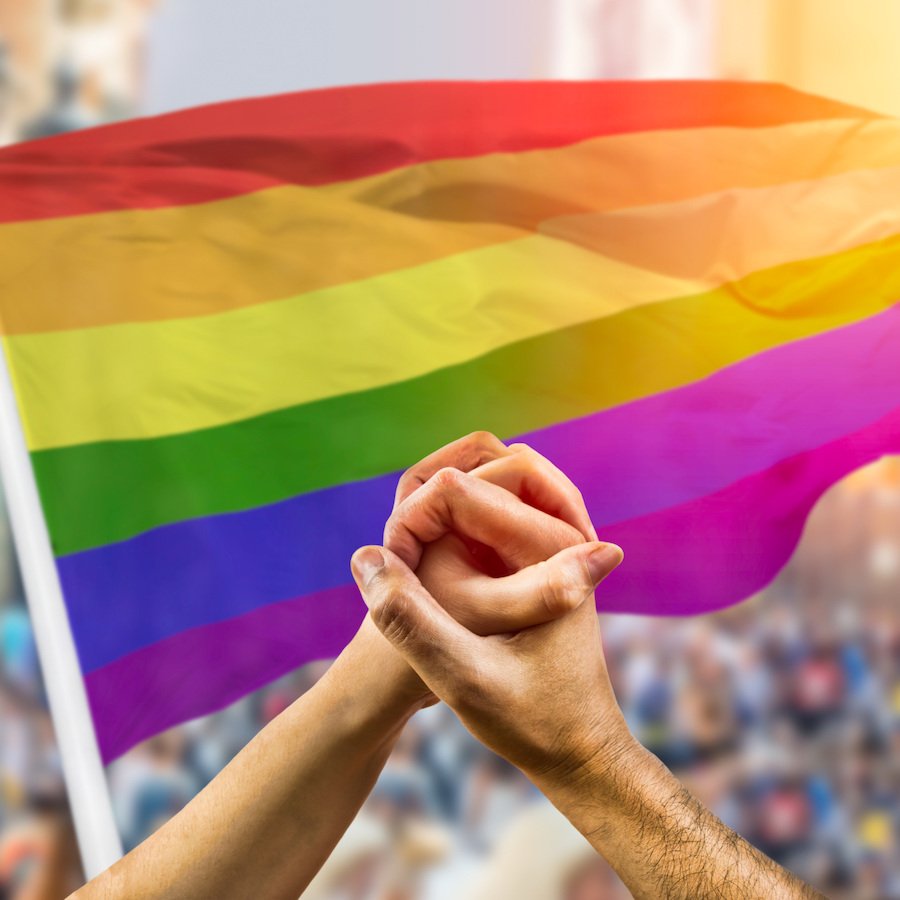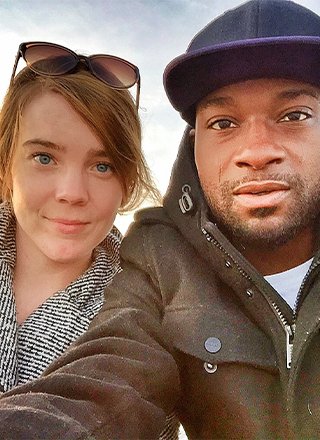The Evangelicals: The Struggle to Shape America by Frances FitzGerald. Simon & Schuster, 753 pp.
The election of Donald J. Trump as the 45th president of the United States left many people scratching their heads, especially in light of the whopping 81 percent of evangelicals who voted for him.
The strong support for the thrice-married, alleged sexual assaulter was especially confusing to some voters who assumed religious values would trump political power. Yet for decades, many within the Religious Right have chosen that power over the “values” they claim to hold.
That’s what makes Frances FitzGerald’s new book, The Evangelicals: The Struggle to Shape America, all the more timely. FitzGerald’s hefty tome provides a historical overview of evangelicals’ rise in American society from the 18th century to the 2016 presidential election, which proves important in analyzing the sustainability of the Religious Right.
FitzGerald explores how instead of staying within the realm of religious or spiritual service, a right-leaning evangelical movement merged with the Republican Party in a quest for political power and a battle for, well, shaping American culture.
She narrates the historical significance of various figures and events that led to the rise of the “Evangelical Empire” long before Trump’s emergence within the political sphere, and delves into historical archives to illuminate the rise and influence of the Religious Right.
As FitzGerald notes, the number of evangelicals grew rapidly during the two Great Awakenings (evangelical and revivalist movements in the 18th and 19th centuries). The success of evangelical proselytizing within Christian denominations made evangelicalism “the most dominant religion in the country.”
Early evangelical enlightenment theology of questioning and addressing social issues such as slavery, women’s rights and more had an interesting impact: FitzGerald notes that evangelicals’ use of religiously tinged arguments in the public sphere sparked early regional culture wars between conservative and moderate evangelicals, primarily over slavery.
“Evangelicalism,” FitzGerald writes, “developed so differently in the two regions of the country.” While many Northern evangelicals participated in the abolitionist movement and made a faith-based argument against slavery, most Southern evangelicals tended to argue that slavery was an evil, but a “lesser evil” than dividing the union.
Although this narrative focuses on an earlier era in our history, FitzGerald’s narration in The Evangelicals helps us understand what shaped the contemporary cultural morality divide between the Religious Right and moderate or progressive evangelicals. As social reform swept through American culture, the rise of fundamentalism within the evangelical movement provided a rationale for resisting social justice while striving for political power to block it. By the 20th century, “cultural exiles,” as FitzGerald dubs them, portrayed “themselves as martyrs” fighting for faith in an increasingly secular country.
FitzGerald argues that religious historians have ignored how the fundamentalist wing of the evangelical movement not only survived, but thrived, during the Great Depression and World War II. An evangelist who played a predominant role in expanding the tent of Religious Right fundamentalism as we know it today was Billy Graham.
Graham’s legacy as one of the nation’s most well-known evangelists – he was continuing to preach as recently as 2005 – was to unite conservative white Protestants around the country and get them to identify as “evangelicals.” Despite not being notably racist, Graham’s exclusive popularity among white evangelicals was a catalyst in solidifying the Religious Right’s base as a racially-privileged vocal majority.
That would become a problem as American society adopted a more and more progressive focus regarding civil rights, women’s rights, secular public school curricula and LGBTQ rights. Graham’s relatively more moderate, less strident preaching tone was abandoned by Religious Right figures who followed, notably Jerry Falwell and Pat Robertson. Insisting on Christian victimhood while attempting to oppress marginalized groups, Falwell, a preacher, and Robertson, a minister and media mogul, spoke for and energized a Religious Right movement clinging to a regressive culture that was rapidly decaying.
Their language was combative. When in 1979 Falwell launched the Moral Majority, an organization encouraging right-wing Christians to be politically involved, he declared that the Religious Right was “fighting a holy war.”
The Religious Right’s idea of a “holy war” was fighting progress in women’s rights and reproductive health care access by successfully opposing the Equal Rights Amendment (ERA) and attacking the U.S. Supreme Court’s 1973 7-2 decision in Roe v. Wade, which granted women the constitutional right to safe and legal abortion. Religious Right leaders also blasted the so-called “immorality” of same-sex relationships and asserted that failure to reverse the 1962 Supreme Court decision banning official school prayer (as unconstitutional according to the establishment-of-religion clause of the First Amendment) would bring doom from God down on the country.
Nonetheless, the Religious Right ironically promoted an atavistic culture, using modern technology to dominate the media narrative; its leaders worked to perpetuate the myth that evangelical beliefs paralleled Religious Right beliefs. They also had no problem extending the tent of Religious Right fundamentalism to right-wing Catholic activists like Phyllis Schlafly, who led the fight to defeat the ERA.
As FitzGerald documents, Robertson, who founded the Christian Broadcasting Network (CBN), Falwell and Jim Bakker, another televangelist, had television or radio programs that weren’t on major networks. Despite that, she notes, they managed to have a powerful presence.
“In effect, they had been hidden in plain sight,” FitzGerald remarks. “Yet … they seemed to be everywhere, putting on huge conferences and mass rallies, and giving interviews on secular TV shows.”
According to FitzGerald, the mid-1970s through the mid-1980s was the defining decade for the Religious Right’s alliance with, and influence on, the Republican Party. Most credit, FitzGerald argues, goes to Falwell, who “provided a half of the epoxy that cemented the Christian right and the Republican Party” despite retiring from the Moral Majority in 1989.
FitzGerald’s historical analysis reminds us that, like all movements, the Religious Right came in waves. Fast-forward to the ‘90s, and Religious Right organizations like the American Family Association (AFA), Focus on the Family and others were surfing the second wave and thriving, thanks in large part to Robertson’s Christian Coalition.
The Christian Coalition’s efforts to lobby politicians and society alike did not go unnoticed. Recognizing the value of the right-wing evangelical vote, GOP politicians made Religious Right messaging a core of their platform.
FitzGerald’s narrative provokes readers to question whether the Republican Party is more reliant on the Religious Right for votes, or the Religious Right is more reliant on the Republican Party for the political power that results in frequently successful legislative support of its causes.
During President George W. Bush’s first term, FitzGerald recalls, Bush strategist Karl Rove speculated that the 2000 election was close because enough evangelicals failed to vote after returning to a belief “that politics was corrupt and they shouldn’t participate,” once again falsely burying the movement that will not die.
But evangelical votes soared in 2004, and Bush claimed 78 percent of it after narrowly winning a second term. He rewarded the Religious Right with religiously motivated legislation such as the Faith-Based Initiatives, which sent taxpayer money to religiously affiliated organizations providing social services without much oversight.
The Religious Right failed to stop Barack Obama from also winning a two-term presidency, but as FitzGerald observes, the movement evolved enough to survive through it. Though originally skeptical of the Tea Party, Religious Right organizations like AFA compromised by joining the movement as a means of resisting change. Once again, the overlying theme in the Religious Right’s alliance with the Tea Party exposes its obsession with maintaining social privilege through political power.
FitzGerald’s analysis exposes the Religious Right’s true survival mechanism: compromise. It supported disgraced former President Richard Nixon during Watergate in the early 1970s, and it has stuck with Trump through multiple scandals, including the release of a videotape of Trump boasting about sexually assaulting women – an action many in the movement once deemed immoral.
FitzGerald argues that to continue to survive, the predominantly white Religious Right, as well as the general conservative religious community, will need to embrace racial and ethnic minorities because “many congregations had intentionally, or unintentionally, excluded African Americans” and other minorities.
The Evangelicals, in 700-plus pages, provides comprehensive documentation of the forces that led to the creation of the Religious Right. FitzGerald examines its leaders and key figures and the significance of its role in shaping American politics and society. Though loaded with hefty historical narrative, FitzGerald’s writing and analysis shape the book as an easy-to-follow and incredibly timely read.


